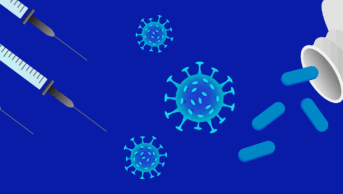Giving patients positive information about their treatment for acute migraine contributes to a successful outcome, whether the patient is given active drug or placebo, a US study has shown (
Science Translational Medicine
; 8 January 2013).
The study investigated how medicine labelling modifies placebo and drug effects. Sixty-six adults with migraine self-reported their pain after one untreated migraine attack and after six subsequent attacks for which treatment was randomly assigned.
One of two treatments was given for each of these six attacks: Maxalt (rizatriptan 10mg) or placebo, labelled in one of three ways (“placebo”, “Maxalt or placebo”, or “Maxalt”). Patients did not know that two of the six treatments were labelled incorrectly, with one containing a placebo tablet labelled as Maxalt and one containing a Maxalt tablet labelled as placebo.
Both treatment and labelling were found to have a statistically significant effect on pain. The typical decrease in pain score (between baseline and 2.5 hours) was 48 per cent with Maxalt treatment and 21 per cent with placebo treatment. Increasing the information from negative (ie, the “placebo” label) to neutral (“Maxalt or placebo”) to positive (“Maxalt”) progressively enhanced the effects of both placebo and Maxalt.
The researchers note that, compared with the untreated migraine attack, in each scenario the placebo accounted for more than 50 per cent of the drug effect. Also, placebo mislabelled as Maxalt reduced headache severity as effectively as Maxalt mislabelled as placebo.


